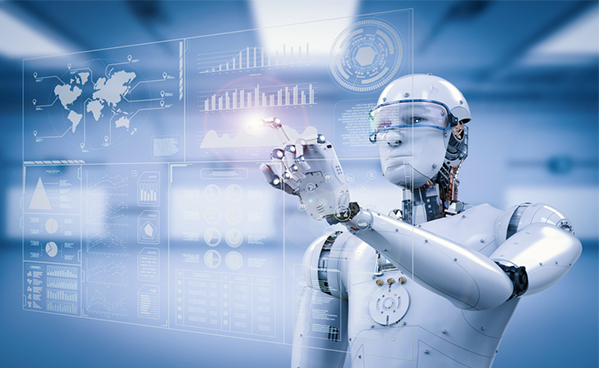Editor’s Note: Guilherme F. Frederico is Associate Professor of Operations and Supply Chain Management at School of Management - Federal University of Paraná – UFPR – Brazil and Visiting Research Professor of Centre for Supply Chain Improvement at University of Derby - UK.
It might be strange to discuss this topic in the Era of Industry 4.0, which predicts that the more automated work better is the impact on supply chains' performance. However, the question which raise is, could we extract the maximum benefits from both machines and humans in the supply chain? This is what supply chain 5.0 aims to answer.
Supply Chain 4.0 is the way which products and services are generated with the use of a mix of disruptive technologies properly interoperable. These main Industry 4.0's technologies are Internet of Things, Cloud Computing, Artificial Intelligence, Big Data Analytics, Additive Manufacturing, Robotics, Blockchain and Augmented Reality. All those technologies effectively integrated allows better performance on supply chain processes in terms of efficiency, integration, collaboration, responsiveness, flexibility, quality and transparency. These integrated technologies aims to create cyber-physical systems overall the supply chain's processes.
However, the Industry 4.0 revolution has considered a clear separation between humans and machines, specifically robots. On the idea of achieving the maximum benefits from both humans and robots, some visionaries are disseminating the idea of the Fifth Industrial Revolution – The Industry 5.0. Practitioners and academics are discussing this new forthcoming Industrial Revolution based on three following elements:
Collaborative work between Humans and Robot (Cobot): by the contrast of Industry 4.0, humans and robots will collaboratively work together. The role of robots will be more focused on the roles, which is harder, boring and, dangerous to be executed by humans. For the successful of this interaction, the security aspects will be the key in order to keep the integrity of humans working together with robots. The aim of this collaborative work is to bring Artificial Intelligence aligned with Internet of Things and Big Data Analytics technologies, to be imbedded on the human's life and extracting all potentialities from them. This will allow creating an effective synergic environment between Humans and Machines.
Mass Customization and Personalization to Customers: The perfect harmony between Humans and Machines predicts to allow a more flexibility in terms of personalization of products demanded by customers. The intensive use of disruptive technologies aligned with the creative and smarter job from workers is going to provide higher capacity in delivering personalized products. Therefore, supply chains will be capable to generate mass customization into their production systems. Important to emphasize that in the network view, supply chains' leadership will have to be able to properly deploy their supply chain 5.0's strategy to their upstream and downstream members.
Super Smart Society (Society 5.0): This terminology has been promoted by the Japan Government in 2016, just five years later when German Government proposed Industry 4.0 concept. Society 5.0 predicts the intensive use of Industry 4.0's technologies with human interaction going beyond the threshold of manufacturing and business perspective. On the supply chain side, it is not necessarily linked to the industry. Although some relation and impacts might occur on supply chains, it focus more on solving problems regarding people's quality life and humanity collaborating to create smarter society.
Actually, the elements aforementioned are on embryonic stage yet. Industry 5.0 is still considered a visionary purpose. Perhaps, new elements need to be added aiming to better shape this new revolutionary concept. However, they are crucial to foster new research interests and insights from the supply chain audience.
As the same occurred with Industry 4.0's phenomenon, which the concept of Supply Chain 4.0 has been emerged (i.e. the new way, which supply chains might be viewed and managed on the context of Industry 4.0), Supply Chain 5.0 surges as an important concept to be considered as well. Although there are still few publications in regards this subject from both academic and practitioners' sides, and even Industry 4.0 is still on middle stage, it is important to initiate to think about how supply chains will have to be viewed, reconfigured and managed from this futuristic trend.
SC
MR


Latest Supply Chain News
- Retail sales see gains in October, reports Commerce and NRF
- Balancing green and speed: Home delivery insights from the pandemic era
- AdventHealth named top healthcare supply chain by Gartner
- Geopolitical readiness in supply chains: Strategic challenges for leaders
- Unlocking retention: The role employee engagement plays
- More News
Latest Podcast

 Explore
Explore
Business Management News
- Retail sales see gains in October, reports Commerce and NRF
- Balancing green and speed: Home delivery insights from the pandemic era
- AdventHealth named top healthcare supply chain by Gartner
- Unlocking retention: The role employee engagement plays
- Can supply chain managers embrace an entrepreneurial mindset?
- Challenges to ESG reporting
- More Business Management
Latest Business Management Resources

Subscribe

Supply Chain Management Review delivers the best industry content.

Editors’ Picks




